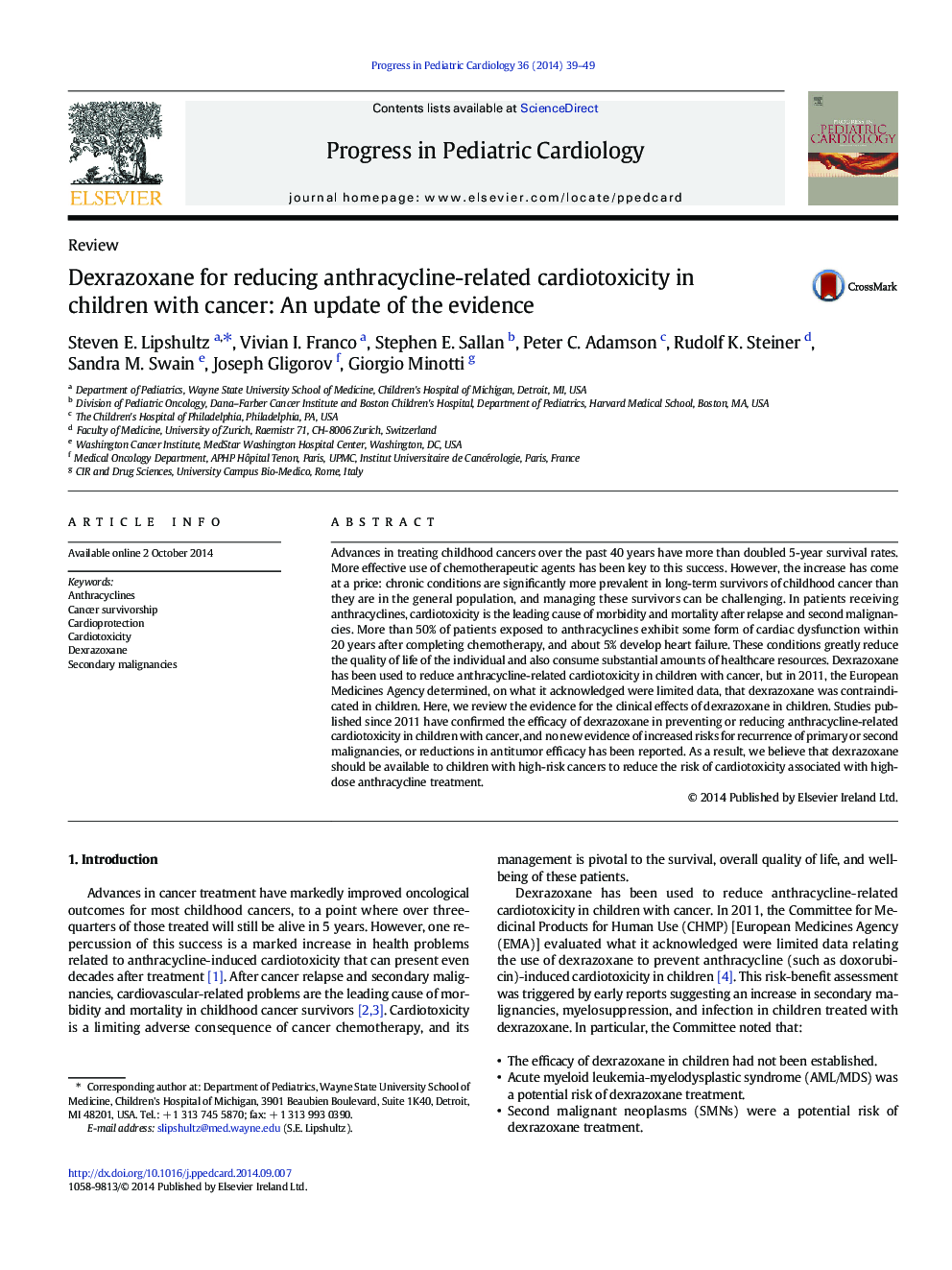| Article ID | Journal | Published Year | Pages | File Type |
|---|---|---|---|---|
| 5997026 | Progress in Pediatric Cardiology | 2014 | 11 Pages |
Advances in treating childhood cancers over the past 40Â years have more than doubled 5-year survival rates. More effective use of chemotherapeutic agents has been key to this success. However, the increase has come at a price: chronic conditions are significantly more prevalent in long-term survivors of childhood cancer than they are in the general population, and managing these survivors can be challenging. In patients receiving anthracyclines, cardiotoxicity is the leading cause of morbidity and mortality after relapse and second malignancies. More than 50% of patients exposed to anthracyclines exhibit some form of cardiac dysfunction within 20Â years after completing chemotherapy, and about 5% develop heart failure. These conditions greatly reduce the quality of life of the individual and also consume substantial amounts of healthcare resources. Dexrazoxane has been used to reduce anthracycline-related cardiotoxicity in children with cancer, but in 2011, the European Medicines Agency determined, on what it acknowledged were limited data, that dexrazoxane was contraindicated in children. Here, we review the evidence for the clinical effects of dexrazoxane in children. Studies published since 2011 have confirmed the efficacy of dexrazoxane in preventing or reducing anthracycline-related cardiotoxicity in children with cancer, and no new evidence of increased risks for recurrence of primary or second malignancies, or reductions in antitumor efficacy has been reported. As a result, we believe that dexrazoxane should be available to children with high-risk cancers to reduce the risk of cardiotoxicity associated with high-dose anthracycline treatment.
